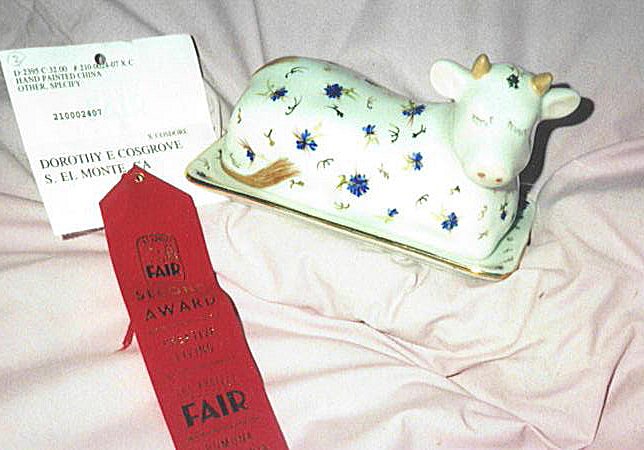
by Dottie Cosgrove Nyon cornflowers are very light and airy and can be painted on almost anything. They go especially well on small pieces and odd shapes and can also be painted on large pieces but this does take time as the flowers are so small. Scatter the flowers in any direction and add gold florets in between. The strokes can also be used to do borders on larger pieces, such as the " Dog's Tooth" border. |
 |
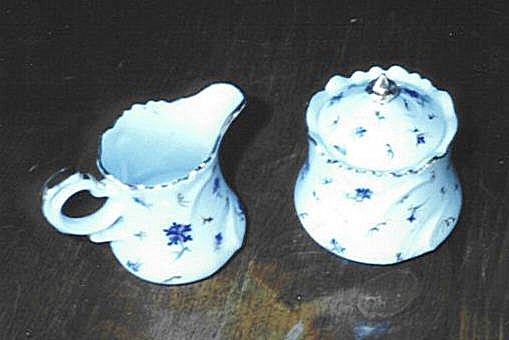 |
MEDIUM: You need a FAST DRYING MEDIUM. I like to use Carlos Spina's medium called" Tropical Mood" as it does not chip and you can get a little build up of paint on the flowers...but you can use any FAST DRYING MEDIUM. I mix the powdered paint with the medium. You also need a few drops of Oil of Clove which delays the drying time. I use turpentine to thin my paints and clean my brushes. BRUSHES: a 5/0 or 6/0 spotter or a Dresden #2 pointer. It depends on the size of your piece...how small a flower you will want to paint. A brush with only a few hairs will work well for the stamens... or you can also use a pen with pen oil for the stamens.
Mix very little paint at a time, as it goes a long way for these little flowers. (the paint will keep good for a long time if kept covered) . To a pile of paint the size of a large pea, add one or two drops of medium and a drop of clove oil. Mix this to a heavy cream consistency, like toothpaste. Use turpentine to to thin the paint and clean your brushes |
 |
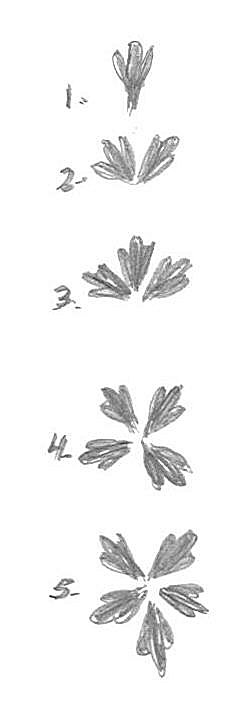 |
The petals are made by three exclamation marks. The flowers can have 1,2,3,4 or 5 petals. (The Nyon experts say to leave out the four petals, as they are not pleasing to the eye... but even the experts used 4 petals at times.) The stems should be thin and slightly curved. The leaves are very simple and there can be 1, 2 or 3 leaves on a stem. The stems are done in green with a fine curved line, either to the left or the right. For the leaves, you can use the same stroke as you did for the petal, but curve it slightly and maybe add a short tail. (See picture below)
Paint the stamens last. It is best to do one flower, stem and leaves completely before going on to the next flower. This helps to place them better, as you want to place them at different angles and also leave room for the gold florets. Remember that this pattern should give the impression of scattered flowers and should not be symmetrical, but in a scattered design. I prefer to do my cornflowers in two fires, although some painters can do them in only one. Our great cornflower teacher, Gloria Zook (who passed away many years ago) did hers in only one fire. I do the flowers, stems and leaves on the first fire. Fire at 017. Then on the second fire, I add the stamens and gold florets and a border, if I am using one. I fire again at 017. See illustrations below for additional ideas on using the cornflower strokes as a swag and also as a dogtooth border. |
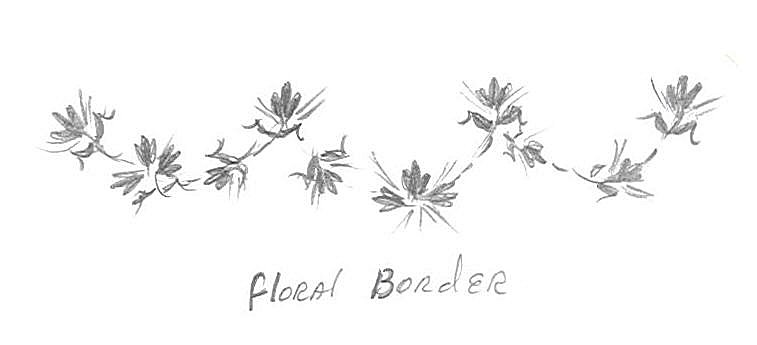 |
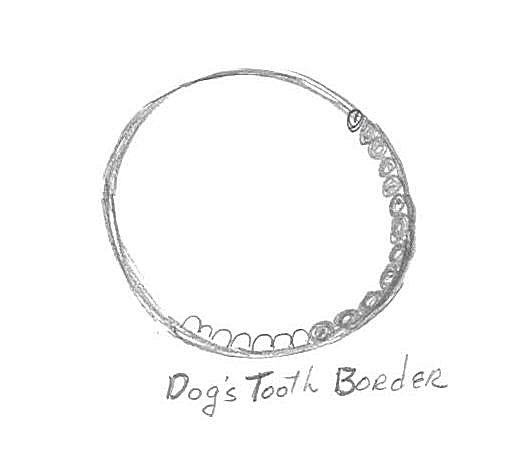 |